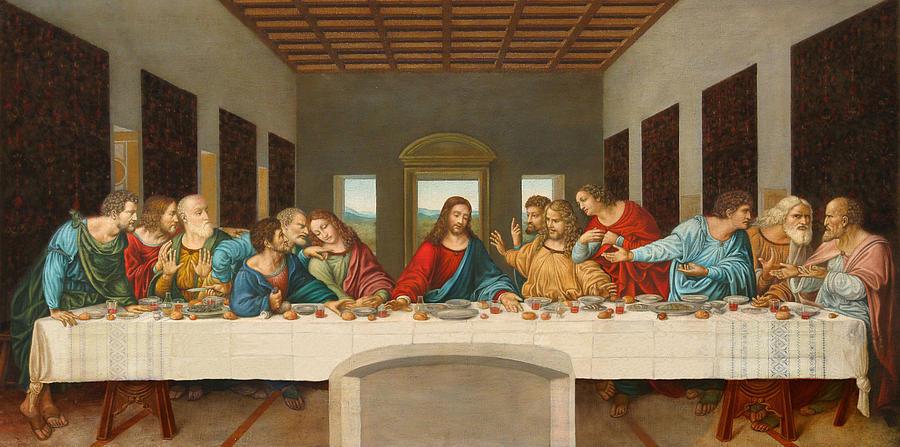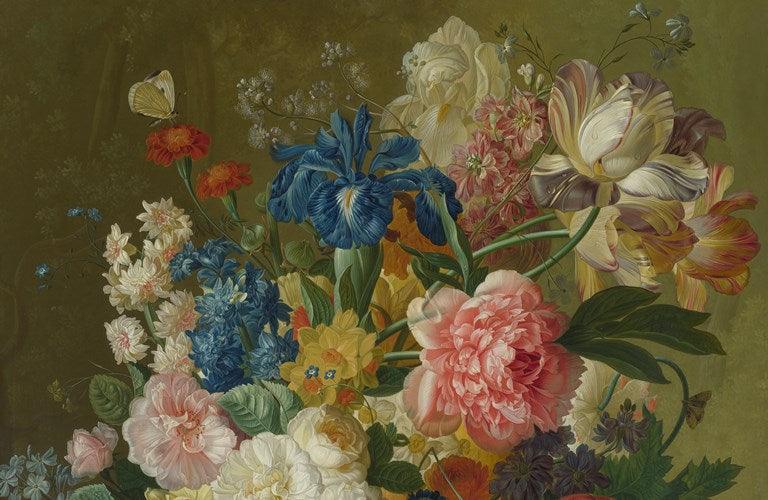As an art enthusiast, I have always been captivated by the Last Supper painting. The painting depicts the final meal Jesus shared with his disciples before his crucifixion, and it has become one of the most famous paintings in history. In this article, I will explore the fascinating history of the Last Supper painting, its symbolism, and its significance in art history.
Introduction to the Last Supper Painting

The Last Supper painting is a masterpiece that has been admired by art lovers for centuries. The painting depicts Jesus Christ and his disciples gathered around a table, sharing a meal. Leonardo da Vinci painted the Last Supper between 1495 and 1498 for the Dominican monastery Santa Maria delle Grazie in Milan, Italy. The painting is a fresco, meaning it was painted on a wall using water-based pigments.
History and Background of the Last Supper Painting
The story behind the Last Supper painting is rooted in the New Testament of the Bible. According to the Bible, Jesus shared a meal with his disciples on the night before his crucifixion. During the meal, Jesus announced that one of his disciples would betray him. The Last Supper painting captures this moment, with each disciple reacting differently to Jesus' announcement.
Leonardo da Vinci was commissioned to paint the Last Supper by Ludovico Sforza, Duke of Milan. The painting was intended to be a decoration for the dining hall of the Dominican monastery Santa Maria delle Grazie. Leonardo spent three years painting the Last Supper, meticulously planning each detail of the painting.

The Story Behind the Painting - Jesus and His Disciples
The Last Supper painting is a representation of the final meal that Jesus shared with his disciples. In the painting, Jesus sits at the center of the table, surrounded by his twelve disciples. Each disciple is depicted with a different facial expression, reflecting their individual responses to Jesus' announcement that one of them would betray him.
The painting captures the moment when Jesus announces that one of his disciples will betray him. The disciples are shocked and confused, and each one reacts differently. Judas Iscariot, who would later betray Jesus, is shown clutching a small bag of silver coins.

Leonardo da Vinci and the Last Supper
Leonardo da Vinci was one of the greatest artists of the Italian Renaissance, and the Last Supper is considered one of his greatest masterpieces. Leonardo was a perfectionist, and he spent three years painting the Last Supper, carefully planning each detail of the painting.
Leonardo used a new technique called tempera instead of the traditional fresco technique. This allowed for greater detail and better color saturation. Unfortunately, the tempera did not adhere well to the wall, and the painting began to deteriorate almost immediately.

Analysis of the Painting - Composition, Color, and Symbolism
The Last Supper painting is a masterpiece of composition, color, and symbolism. The painting's composition is a marvel of balance and symmetry, with Jesus at the center of the table, surrounded by his twelve disciples.
The colors used in the painting are rich and vibrant, with each disciple's robe and cloak painted in a different color. The colors are symbolic, representing each disciple's personality and character.
The painting is also full of symbolism. For example, the bread and wine on the table represent the body and blood of Christ. The painting's overall theme is the betrayal of Jesus by one of his disciples, and each disciple's reaction to the news is depicted in their facial expressions.

The Significance of the Last Supper Painting in Art History
The Last Supper painting is one of the most significant paintings in art history. It is a masterpiece of composition, color, and symbolism, and it has influenced countless artists over the centuries.
The painting's influence can be seen in the work of other great artists, such as Michelangelo and Raphael. The Last Supper has also inspired countless imitations and reproductions, including paintings, prints, and sculptures.
Other Famous Paintings of Jesus

The Last Supper painting is not the only famous painting of Jesus. There are many other notable paintings of Jesus, including the Sistine Chapel ceiling by Michelangelo, the Christ Pantocrator icon by the Byzantine artist, and the Ecce Homo painting by Caravaggio.
Each painting of Jesus has its own unique style and perspective, and they all capture a different aspect of Jesus' life and teachings.
Tips for Drawing and Painting Jesus

If you are interested in drawing or painting Jesus, there are a few tips you can follow to make your artwork more successful. First, study the work of other artists who have painted Jesus, including the Last Supper painting by Leonardo da Vinci.
Second, focus on capturing Jesus' personality and character in your artwork. Jesus was a complex figure, and your artwork should reflect that complexity.
Finally, experiment with different techniques and styles to find your own unique approach to painting Jesus.
Where to See the Last Supper Painting and Other Jesus Paintings

The Last Supper painting is located in the Dominican monastery Santa Maria delle Grazie in Milan, Italy. If you are planning a trip to Milan, be sure to visit the church and see the painting for yourself.
Other famous paintings of Jesus can be found in museums and galleries around the world. The Sistine Chapel ceiling by Michelangelo is located in the Vatican City, and the Christ Pantocrator icon can be found in many Eastern Orthodox churches.
Conclusion - Why the Last Supper Painting Continues to Captivate Audiences Today

The Last Supper painting is a masterpiece that continues to captivate audiences today. Its composition, color, and symbolism are still admired by art lovers around the world, and the painting's theme of betrayal and redemption is timeless.
Whether you are an art lover or a religious scholar, the Last Supper painting is a must-see masterpiece that should be on every art lover's bucket list. So, if you have the opportunity to visit Milan, be sure to see the Last Supper painting for yourself. You won't be disappointed.
CTA
If you enjoyed this article, please share it with your friends and family, and let us know in the comments which Jesus painting is your favorite.








Leave a comment
All comments are moderated before being published.
This site is protected by hCaptcha and the hCaptcha Privacy Policy and Terms of Service apply.